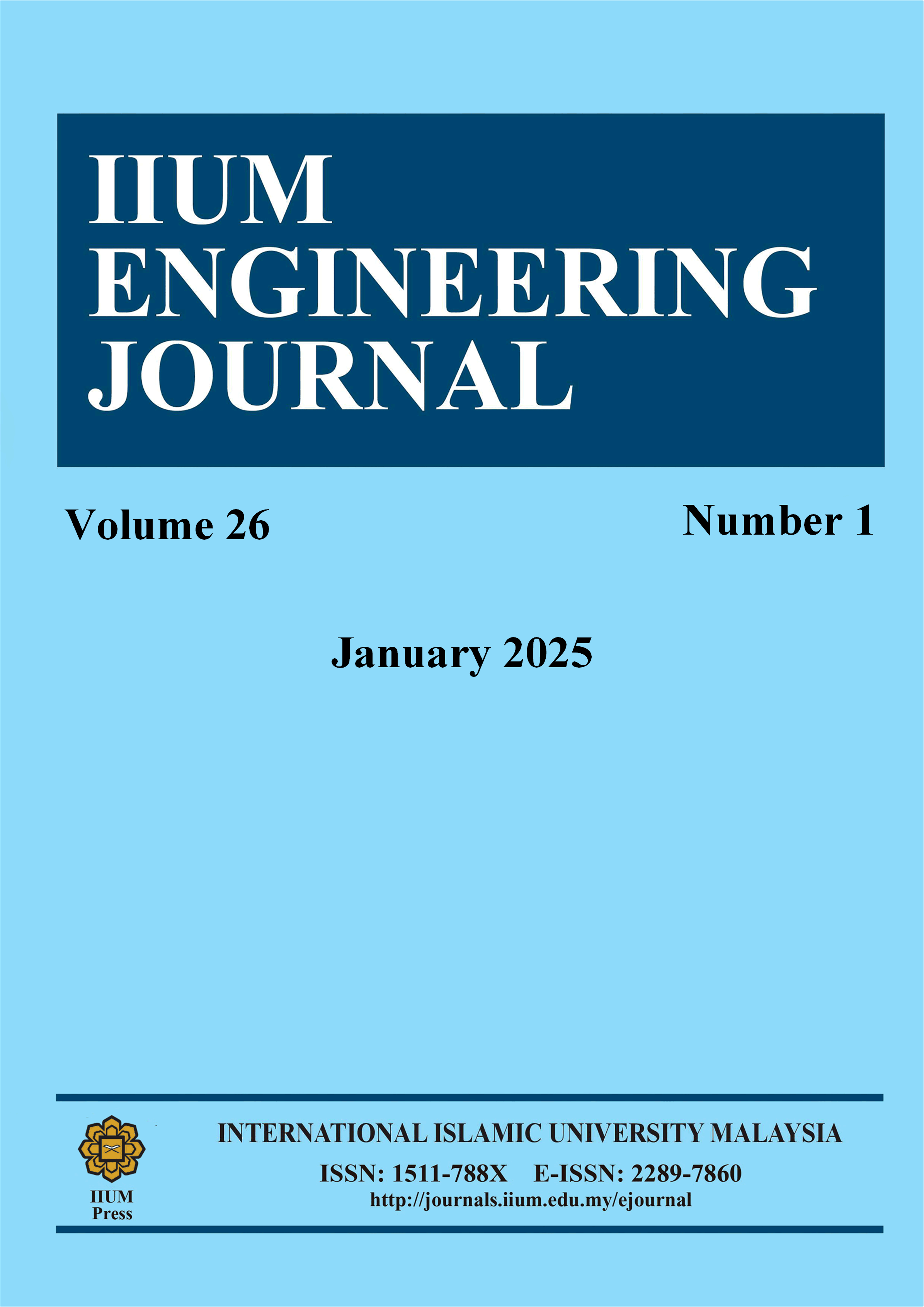Application of Kansei Engineering in Various Train Compartment Designs to Determine the User's Affective Response
DOI:
https://doi.org/10.31436/iiumej.v26i1.3239Keywords:
affective, interior design, kansei engineering, railway, visual appearanceAbstract
Visual appearance (shapes, colors, materials, and surfaces) applied to product design can provide users with emotional and positive affective responses. The desire of such users will provide essential guidelines for companies to develop products, in this case, trains, in the form of private spaces called compartments. Trains are in great demand for long trips, so there is a need for market segmentation. However, current research only focuses on designs that examine functionality needs. Lack of study of design based on visual appearance, research on user preferences, and more scientific evaluation of design is needed. Therefore, this study aims to translate the user's affective response into the interior design specifications of train compartments with the Kansei Engineering method. This research consists of 5 steps: (1) Determining product semantics (Kansei Words assignment); (2) Define product properties (items and categories), as many as eight design samples; (3) Distributing questionnaires to 150 respondents (75 men and 75 women); (4) Data analysis with multivariate statistics, KMO, Barlett's Test, Principal Component Analysis, and clustering of respondents; (5) Evaluate the results of the most optimal design specifications. The results of this study obtained design recommendations: straight shape, studio green color, pine wood HPL material texture, and doff surface. In addition, several user clusters were formed based on gender, age, and monthly income to segment train compartments when commercialized. This research is expected to be helpful for the wider community and the development of the interior design of train compartments.
ABSTRAK: Penampilan visual (bentuk, warna, bahan dan permukaan) yang digunakan pada reka bentuk produk dapat memberikan tindak balas emosi dan tindak balas afektif positif daripada pengguna. Keinginan pengguna akan memberikan garis panduan penting bagi syarikat untuk membangunkan produk, dalam kes ini kereta api dalam bentuk ruang peribadi yang dipanggil petak ruang kereta api. Kereta api mendapat permintaan yang tinggi bagi perjalanan jauh, jadi terdapat keperluan untuk pembahagian pasaran. Walau bagaimanapun, penyelidikan semasa hanya memberi tumpuan kepada reka bentuk yang mengkaji keperluan fungsi sahaja. Terdapat kekurangan kajian mengenai reka bentuk berdasarkan penampilan visual, penyelidikan mengenai keutamaan pengguna, dan penilaian reka bentuk yang lebih saintifik diperlukan. Oleh itu, kajian ini bertujuan untuk menterjemahkan tindak balas afektif pengguna ke dalam spesifikasi reka bentuk dalaman petak ruang kereta api menggunakan kaedah Kansei Engineering. Penyelidikan ini terdiri daripada 5 langkah: (1) Menentukan semantik produk (penentuan patah kata Kansei); (2) Tentukan sifat produk (item dan kategori), sebanyak lapan sampel reka bentuk; (3) Mengagihkan soal selidik kepada 150 responden (75 lelaki dan 75 perempuan); (4) Analisis data dengan statistik multivarian, KMO, Ujian Bartlett, analisis komponen utama, dan kelompok responden; (5) Penilaian keputusan spesifikasi reka bentuk paling optimum. Hasil kajian mencadangkan reka bentuk: bentuk lurus, warna hijau studio, tekstur bahan HPL kayu pain, dan permukaan doff. Di samping itu, beberapa kluster pengguna dibentuk berdasarkan jantina, umur dan pendapatan bulanan bagi memudahkan pembahagian petak ruang kereta api apabila dikomersialkan. Kajian ini dijangka berguna kepada masyarakat yang lebih luas dan pembangunan reka bentuk dalaman petak ruang kereta api pada masa hadapan.
Downloads
Metrics
References
D. K. Yohanny, L. Purwaningrum and A. Mulyono, "Analysis of User Preferences from the Visual Impression of New Generation Railway Compartment Interior Design with Kansei Engineering Method," 2022.
M. Bergman, B.-G. Rosen and L. Eriksson, "Affective Surface Engineering for Total Appearence - Soft Metrology for Chrome Surface in Car Interior Design," 6th Kansei Engineering & Emotion Research, August - September 2016.
S. N. Hapsari, T. Sjafrizal and R. A. Anugraha, "Designing Train Passenger Seat by Kansei Engineering in Indonesia," Bandung, 2017. DOI: https://doi.org/10.1051/matecconf/201713500017
M. Trepayova, V. Kureykova, P. Zameynik and P. Yeazay, "Advantages and disadvantages of rail transportation as perceived by passengers: A qualitative and quantitative," Transactions on Transport Sciences, vol. 11, no. 3, pp. 52-62, 2020. DOI: https://doi.org/10.5507/tots.2020.014
R. Mono, Design for Product Understanding, Stokholm, Sweden: ISBN 9789147011056, 1977.
M. Nagamachi and A. M. Lokman, "Innovations of Kansei Engineering," Tokyo, 2011.
S. Schutte, Engineering Emotional Values in Product Design, Linkoping: UniTryck, 2005.
L. Xue, X. Yi and Y. Zhang, "Research on Optimized Product Image Design Integrated Decision System Based on Kansei Engineering," MDPI, pp. 1-19, 2020. DOI: https://doi.org/10.3390/app10041198
H. W.N, Y. S.H, S. H, S. M.S and A. A, "Customer Preferences in Car Design Using Kansei Engineering and Cubic Bezier Curve," International Journal of Engineering and Technology, vol. 7, no. 4, pp. 4170-4173, 2018.
C. E. Osgood and J. G. Snider, Semantic Differential Technique, Chicago: Aldine Publishing Company, 1969.
M. Nagamachi, Kansei/Affective Engineering, CRC Press, 2010.
R. A. Johnson and D. W. Wichern, Applied Multivariate Statistical Analysis, 6th ed., Upper Saddle River, New Jersey: Pearson Prentice Hall, 2007.
P. H. Bloch, "Seeking the Ideal Form: Product Design and Consumer Response," Journal of Marketing, vol. 59, no. 3, p. 16, 1995. DOI: https://doi.org/10.2307/1252116
S. T. Schutte, J. Eklund, J. R. Axelsson and M. Nagamachi, "Concepts, Methods and Tools in Kansei Engineering," vol. 5, pp. 214-231, 2004. DOI: https://doi.org/10.1080/1463922021000049980
H. Medriosa, "Metode Cluster Analysis," Jurnal Momentum, vol. 16, no. 2, 2014.
P. Kotler, Marketing Management, Jakarta: Erlangga, 1999. DOI: https://doi.org/10.1002/ltl.40619991107
J. I. Principal Component Analysis, New York: Springer Verlag, 2022.
A. Ginanjar and Y. Supendi, " Kansei Engineering's Implementation in Designing the Interface of the Mobile Website of the News Portal of Education and Children's Health Information," Jurnal Tiarsie, vol. 14, no. 1, 2017. DOI: https://doi.org/10.32816/tiarsie.v14i1.18
D. K. Seftianingsih, " Introduction to Different Types of Solid Wood and Their Construction for Wooden Furniture," Interior Design Major, Universitas Sahid, Surakarta, 2018.
X.-H. Xie, Y. Xu, S. Guo, H. Zhu and H. Yan, "Evaluation and Decision of a Seat Color Design Scheme for a High-Speed Train Based on the Practical Color Coordinate System and Hybrid Kansei Engineering," MDPI, vol. 12, p. 316, 2024. DOI: https://doi.org/10.3390/systems12080316
Downloads
Published
How to Cite
Issue
Section
License
Copyright (c) 2024 IIUM Press

This work is licensed under a Creative Commons Attribution-NonCommercial 4.0 International License.






















